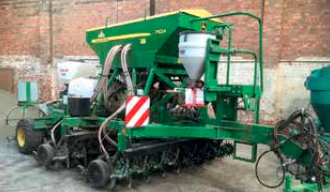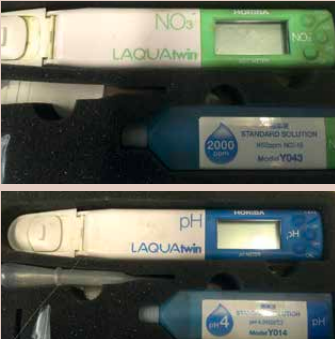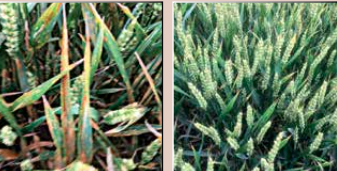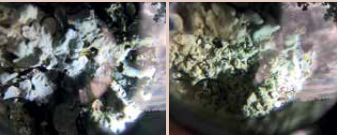
Managing 300ha in South Staffordshire on sandy/clay loam soils, I first became aware of how important soil was in the mid-90s. Presently, nothing in my mind is more important than our soil. It provides the population with food, air and clean water through plants and trees, that keep us nourished and sustained in life. Additionally, I noticed how crop yields had plateaued, whilst I was having to apply more nitrogen in order to get the same results. I knew something had to change; it is believed that 1kg of unused nitrogen can destroy 100kg of carbon in the soil. I knew that I had to replace the carbon that had been depleted over the last 60 years; the question was, how I was going to do it. It began for me in 2010 in using a strip till drill, which worked really well. I never had a yield drop, only an increase; this was also a fantastic way for me to start and get my head around moving much less soil, which brought the change to a no-till drill.
In 2015 in the form of a 750a, never had I seen a drill position seed so accurately before, but the drill did lack some features which I felt it needed. I wanted to be able to place fertiliser / biology down next to the seed; this is vital to get the best out of the biology brew, which is aimed to fix nitrogen and release phosphate and also fight off fungal infection, of which I have had some fantastic results.

The options needed were another hopper for companion cropping or applying slug pellets. This was achieved by blowing the seed into the venturi. Also I wanted to be able to apply mycorrhizal fungi when sowing grass on a short term ley, (which I make into haylage for horse feed). This is a fantastic way to build fungi as the crop is down for 4-5 years and in addition it also controls grass weeds. Furthermore, I also wanted to be able to broadcast at the rear of the drill to give me even more options, such as applying Avadex or Boron granules.
The next change to consider was rotation, as now I not only grow what is profitable, but also what is best for the individual field. Since I am now farming for regeneration of soil for future generations, I feel that this is an important issue; to leave the soil in a regenerative cycle moving forward for generations to come and repair some of the damage done in the past. I still have OSR in the rotation, but on a 6-year rotation, as I feel this is still a good break crop for the farm that is profitable.
I haven’t used insecticides for 5 years and don’t really have a problem with csfb (I hope I have not jinxed myself by saying that). With dd crops I always get a higher brix reading (I recommend everybody to purchase a refractometer) which means that the crops grown just don’t show up on aphids’ radar but I am still out checking on a regular basis. I feel once you get off the insecticide hamster wheel then all the predators come back and begin to do the job for which they were intended. Nature to me has all the answers; we may not have discovered them yet, but they are there. I may also grow W Wheat, W/S barley W/S oats, W/S Beans, Lupins and Grass.

Autumn herbicides are no longer used, as all crops are drilled on the green into cover, this also reduces/eliminates the need for slug pellets. The rotation is also split w/s cropping in order to allow growing a cover crop through the mid-tier scheme which allows me to be able to put carbon back into the soil through photosynthesis and also keep biology alive within the soil whilst also getting paid for the privilege. Cover crops are then destroyed either by grazing or rolling on a frost, but it does need to be – 4o C when rolling in my experience in order to get the shatter effect, which breaks the crop down into manageable pieces enabling worms to incorporate it into the soil. I am always trying to cut down on the need for glyphosate and this is one way that has definitely worked.
The other approach for the future will be some trials with a crimper roller, as I firmly believe and have found, that as long as you keep the soil covered then weeds have no need to germinate hence, we have not the need for herbicides. People often said to me that as I disturb less soil, I would reduce my weed bank in time. I now believe this is not relevant; I want and need my seed bank as an indicator of what is actually happening within the soil, so if I do not keep the soil covered, the soil will take care of itself and produce plants to protect it. I no longer have problems with brome grass these days (hope I haven’t jinxed myself by exclaiming that!) as my soil health has got a lot better I may get the odd plant which is just a reminder of what I am trying to achieve to keep me on track and not lose my focus on where I am heading.

Cutting down on fungicides has also been one of my aims as some can be damaging to fungi within the soil and take yield if they are not needed. I have managed to grow wheat and barley without fungicides with a healthy soil and have brewed up microbes to eat fungi attacks such as fusarium. I like to rely on biology first and keep fungicides as a backup when needed. We still have such a lot to learn from biology and I still feel nature has all the answers especially once we stop relying on synthetic fertilisers, but this system does have its challenges and as I always say when I am giving a talk, one of the most important parts of this system is becoming a farmer again and actually getting out into crops/soil and understanding what is really going on. Regenerative farming has reignited my passion for agriculture, as I totally believe we are what we eat and a healthy soil provides healthy food which results in healthy people.

This season I haven’t applied any T0 fungicides to my wheat. Instead I have corrected any nutritional imbalances using Aviva fertiliser products. I am able to have a mixture of nutrients made up to suit my plant requirements. This is achieved from tissue analysis, brix, potassium and phosphorus readings. The nutrient mix varies from year to year, since weather conditions always vary, in turn causing the biology to behave differently within the soil. When the biology is not able to give the plant what it needs, I intervene. By growing healthy plants from healthy soils I have found I can farm without fungicides, but always like to have them as a backup. I did use some, (a fungicide at T1) on some of my wheat, because at the time of making the decision the weather looked unsettled (good old weather forecast) but the untreated did well and with the weather settled, I used brewed biology and orange oil as a T2.

Notice from the photos the untreated areas did have severe rust which was a nice way to prove that the treatment had done the job, also giving me even more confidence moving forward, which concluded with a biological T3. I feel going forward as farmers, fungicides’ efficacy will continue to reduce and biology will take the lead as it is far more environmentally friendly, which is what our customers will demand going forward but also what I want as a land manager. Soil is our past, present and our future, so as a world community, we must take good care of it if we want to thrive as a species. I wish every person on the planet were compelled to read “Dirt the Erosion of Civilisations”, by David Montgomery. Soil degeneration has happened before and in my mind, it is the fool that doesn’t learn from past mistakes. Recently I have also started to monitor air quality on the farm by looking at which species of lichens are growing around the farm and using them as bio-indicators. As the pictures show, I have moved away from the nitrogen loving species to the more intermediate types (flavoparmelia and parmelia). Once again I am reassured that nature and I are regenerating farming in the right direction.

